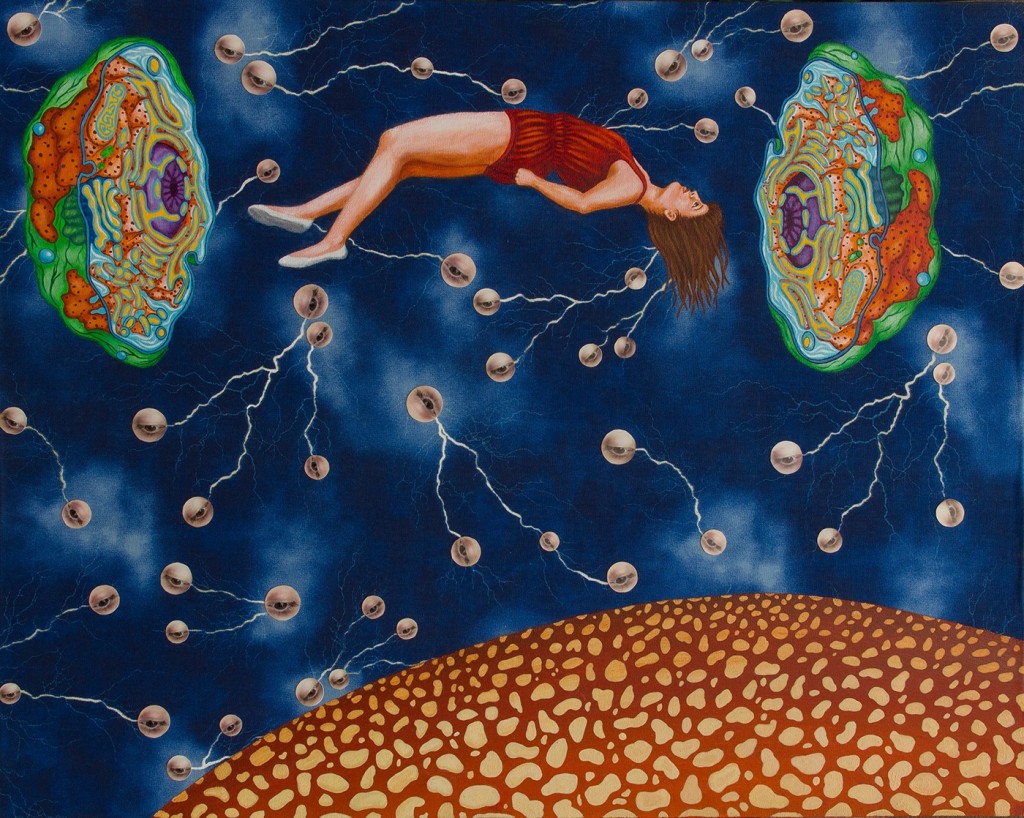You’re Never
Alone: A Christmas Greeting
(Thoughts
inspired by the fact of the many that are alone at Christmas.)
I’ve written you are born, live, die alone:
A bubble, unit, oneness, monad.
On the toilet, in the bed, trillion atoms in your head
“United by their filaments to form a group.”*
Now I tell you otherwise.
Is what I said illusionized?
The truth of it
Sits in the multi-size
Of Word.
I’ve said we are a monad, one;
A simple entity such as an atom or a person.**
This being true on every level:
Biochemical, cerebral
We but grope, we hope, we soap ourselves
In suds of sorrow - isolated.
Whoosh, it’s but to alter view,
Idea’s perspective.
There’s a commonness t’ween me and you.
You’re capable of doing it,
Our minds determining what truth we see.
Accompanied by company
Or vague, irrational ‘aloneness in a crowd’;
Unseen or seen, silent, loud
It is our minds that form reality.
People care.
They’re there
Somewhere and everywhere
To touch your arm, take your despair,
Create endorphin, oxytocin, dopamine and serotonin:
Collectively the Happy Hormone***
Giving capability to ‘Happy to be on your own’
Joined synapses, neurotransmitters
In a happy get together,
Body/soul a whole lot better!
*Botanical reference
** See Leibniz.
***proven fact.

Monad -- Lezley Saar
The Pythagoreans called the 1st thing that came into existence the "monad" (from monas, "singularity," derived from monos, "alone") which begat the dyad (from the Greek word for two), which begat the numbers, which begat the point, which begat lines or finiteness, which begat 2-dimensional entities, which begat 3-dimensional entities; in the 3rd century Diogenes Laertius extrapolated from that progression to the "4 elements" (earth, water, fire and air) from which the rest of the universe is formed. So, "monad" meant divinity, the 1st being, or the totality of all beings. In the 2nd century V
ReplyDeleteValentinus, an early Christian gnostic theologian who had been a papal candidate, taught that the monad is the source of the region of light that constitutes "the fullness of the Godhead" from which taught that the Monad is the high source of the Pleroma, the region of light constituting "the fullness of the Godhead" from which various divine entities and realms emerge via a process of emanation; these become progressively degraded as they become more remote from the monad. (The Christ is the closest, while Sophia [wisdom] is the farthest; its fall results in the creation of the material world.) A generation later the Arab Christian Monoimus used monad to mean the highest god that created lesser gods (elements). In the 18th century Gottfried Leibnitz adapted "monad" to mean "substance," that representation of reality which "virtually" or "potentially" contains within itself all the properties it could exhibit in the future as well as the "trace" of all the properties it exhibited in the past: the monad is "pregnant" with the future and "laden" with the past, in Liebnitz's terminology. Every monad behaves independently of other monads because they are all synchronized by God. Every monad "mirrors" the whole universe, since it expresses all other monads, but no monad has a "window" through which it could actually receive or supply causal influences. Furthermore, since a monad cannot be influenced, it cannot be created or destroyed (except through a miracle, something outside the natural course of events). All monads are thus eternal.
Endorphins (contracted from "endogenous morphine," a morphine-like substance originating from within the body) are endogenous opioid neuropeptides and peptide hormones produced by the central nervous system and the pituitary gland. Their principal function is to inhibit the communication of pain signals, though they may also produce a feeling of euphoria. Oxytocin ("quick birth") is a peptide hormone and neuropeptide normally produced by the paraventricular nucleus of the hypothalamus and released by the posterior pituitary. It plays a role in childbirth, social bonding, sexual reproduction, and milk production. Dopamine (3,4-dihydroxyphenethylamine) is an organic chemical synthesized by removing a carboxyl group from a molecule of its precursor chemical, L-DOPA, which is synthesized in the brain and kidneys. It functions as a neurotransmitter, a chemical released by neurons (nerve cells) to send signals to other nerve cells. The brain includes several distinct dopamine pathways, one of which plays a major role in the motivational component of reward-motivated behavior. The anticipation of most types of rewards increases the level of dopamine in the brain, and many addictive drugs increase dopamine release or block its reuptake into neurons following release. It is often described as the main chemical of pleasure, but a more accurate description is that it signals the the desirability or aversion of an outcome, which influences the organism's relevant behavior.
ReplyDeleteSerotonin (5-hydroxytryptamine) is a monoamine neurotransmitter that contributes to feelings of well-being and happiness, though it also modulates cognition, reward, learning, memory, and numerous physiological and psychological processes (perhaps including mood, anxiety and psychosis).